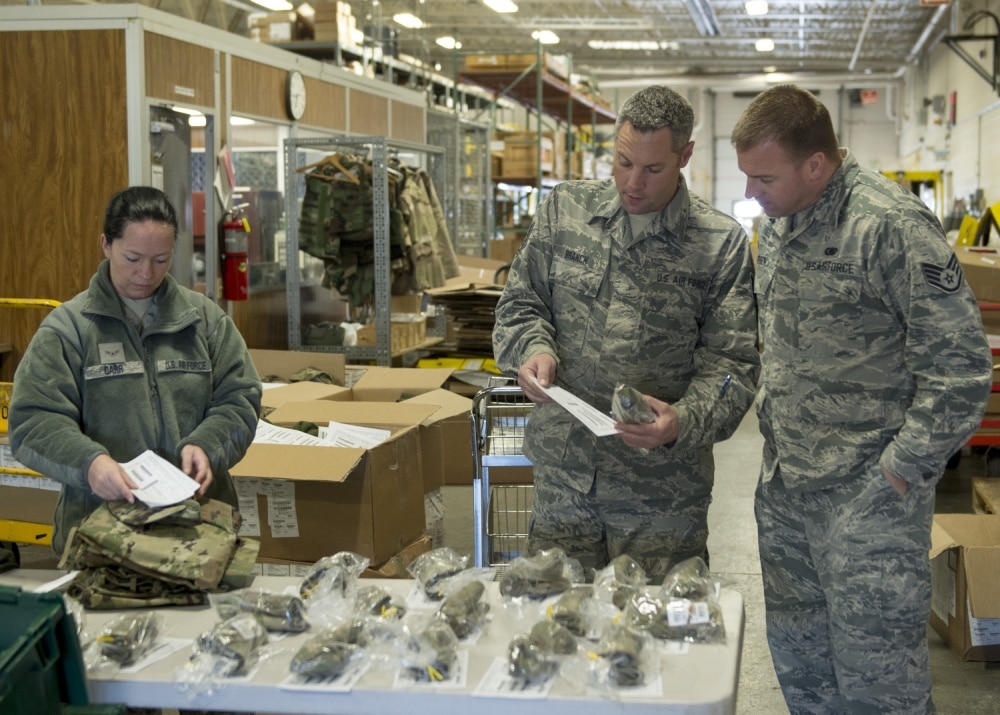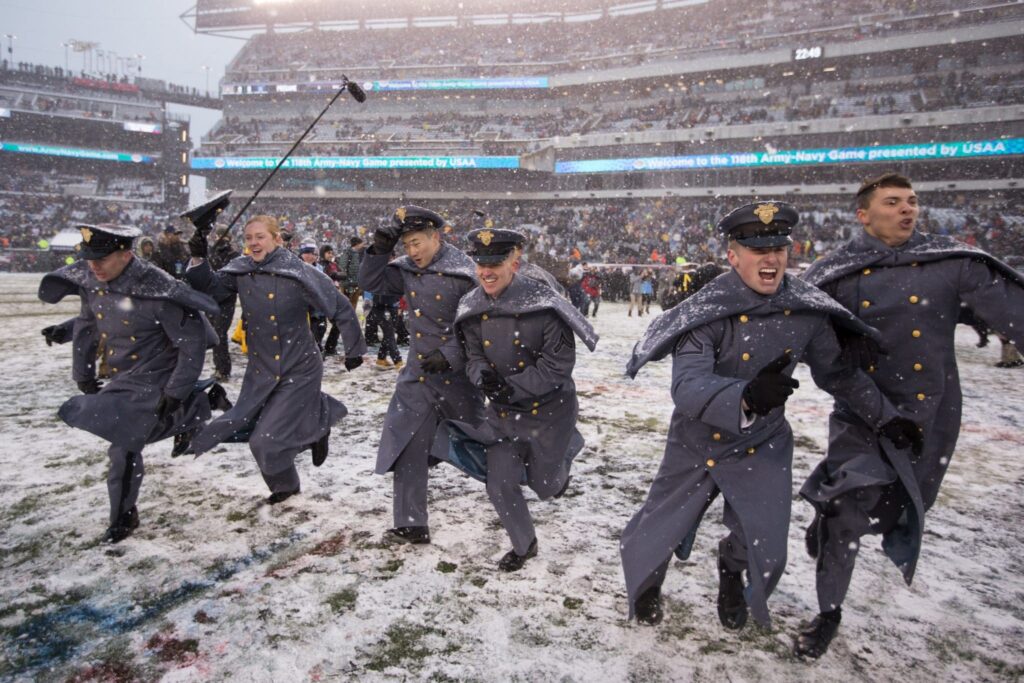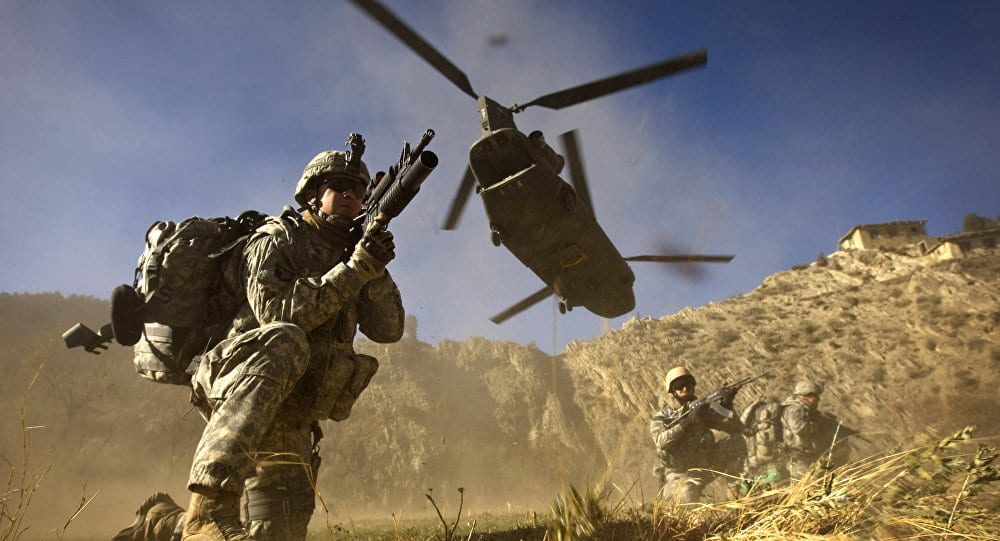Stick a uniformed service member in a crowd of civilians and they’ll always stick out — even in camouflage colors. The blend isn’t quite enough to hide the service member wearing such a distinctive uniform.
It’s a bit ironic but true.
There’s quite an interesting history behind how Army camouflage development and advancements came about. It’s not a totally new concept — nature’s been doing it millions of years — and our military has been using its camo power since the 1800s.
Curious about how Army camouflage came to be? We detail it all below.
A Brief on Camoflouge Color History

By definition, camouflage is a type of military deception to hide and protect soldiers and equipment from the enemy.
It’s the ultimate way to mask your location, movement, and identity from enemies.
Around the early 20th century, rifles evolved and war tactics changed. That’s when the military began moving away from brightly colored uniforms toward drab colors and camouflage.
The most common camouflage technique is concealment by using colors, patterns, and shading to alter physical characteristics. As a result, troops can easily hide, blend in, and disguise the appearance of military targets.
Camouflage Historical Timeline
While it may not be a fashion statement, Army camouflage — and other branch camo uniforms — have changed nearly as much as fashion trends have over the years. Among the reasons include practicality, better materials, improvements, and even creating a more unified look across the armed forces.
Here’s a look into how camouflage has evolved into today’s OCP:
- 1898: U.S. troops wearing blue coats were easy targets during the Spanish-American War. To conceal themselves, they used a quick and efficient technique: They put mud on their uniforms to blend into their surroundings.
- 1914: Camouflage was first developed in France by artists who experimented with patterns to disguise military equipment.
- 1902: The US Army adopts a brown khaki summer uniform and a camouflage olive-drab for winter. These replaced the blue uniform which became the Army’s dress uniform.
- WW I: With the onset of aerial photography, machine guns, and trench warfare in WWI, the use of camouflage became more important. As a result, the US Army had its first camouflage unit. Known as Camofleurs, these impressive artists started designing camouflage tactics and patterns. WWI camouflage appeared primarily on guns and vehicles.
- 1942: The U.S. Army Corps of Engineers developed The Frog Skin uniform. This was the first attempt at disruptive coloration camouflage. This brown and green “frog” pattern became a part of ponchos, shelters, uniforms, and helmet covers. The pattern worked for Marines in the Solomon Islands, but not for soldiers in Europe where the Frog Skin pattern was confused with a German uniform.
- 1950: Leaf-and-twig pattern briefly makes an appearance.
- 1960: U.S. soldiers wore the 4-color pattern camouflage Battle Dress Uniform (BDU), the solid olive-green “boonie suite”, or unofficial tigerstripe or duck hunter patterns. Special Forces like Green Berets and SEALs began wearing a Tigerstripe camouflage pattern, both on and off duty.
- 1967: The woodland-style leaf pattern comes out.
- 1970-80s: The M81 woodland pattern became the authorized standard for all branches of the military in the late 70s. This uniform included a 4-color pattern of black, brown, green and khaki. A new woodland pattern BDU released in 1981.
- Gulf War: A 6-color uniform, “chocolate chip” cammie is issued as the shades are for desert activities. It has shades of brown and grey with specks of black. Chocolate chip is replaced with a more subdued, 3-color pattern of tan, brown, and light khaki green.
- Iraq and Afghanistan Wars: The early 2000s brought new wars and new uniforms as well. This was the first time computer-generated patterns were developed. The colors were green, tan, and gray to blend into the woodland and sandy environments in the Middle East. Congress ordered 70,000 new uniforms for troops in Afghanistan for the safety of soldiers.
- Today: Now, the uniforms across all branches are for a more unified look across the board. Camo is still a must for combat but is also commonly worn in everyday work environments, too. Even the new U.S. Space Force uniforms are camouflage colors.
Camouflage Colors Will Always Be “In”

Change as they may, camouflage colors will always be “in” for our military.
For the military, camouflage colors and blends for uniforms are a must. When the mission is always changing, so is the terrain in which troops must battle.
That’s why seemingly every few years, you’ll see a new rollout of uniforms for service members. The goal is to make the uniforms more efficient, safe, comfortable, and practical for those serving.
Recent Changes to Military Uniforms
Even late last year, the Air Force started issuing new Operational Camouflage Pattern (OCP) uniforms to recruits. The brown, green, and khaki color uniforms look similar to the Army camo uniforms most people think of.
The biggest bonus for Air Force members is that they can use the OCP uniform for both daily work and deployments. That means one less uniform to maintain and purchase.
Last year, the Army retired its pixelated Universal Camouflage Pattern uniform (UCP). Soldiers now wear the green-and-brown OCP uniform instead. The Navy also required sailors to stop wearing the daily “blueberry” work uniform. Sailors now wear a green-and-black digital camo design called Type III.
And it shouldn’t come as a surprise when new upgrades come again. The military is always improving upon and negotiating with contractors to create the latest and greatest models of gear.
Even as the new uniforms roll out, you can expect changes and tweaks through the time the next one comes out. Improvements are always possible, right?
What’s your favorite military uniform to wear? What do you love most about it? Share in the comments below!
Feature image courtesy of U.S. Air National Guard photo by Ryan White




